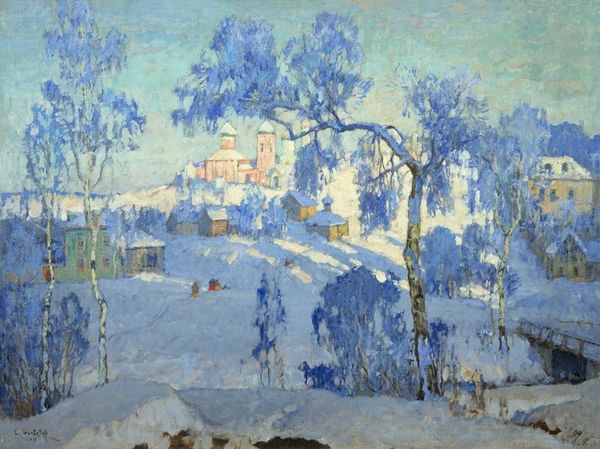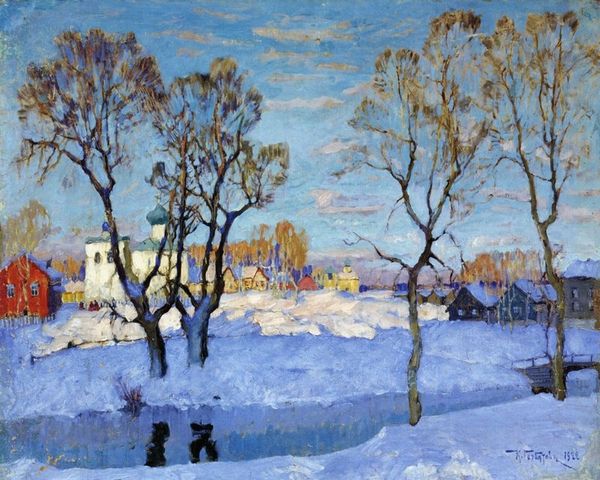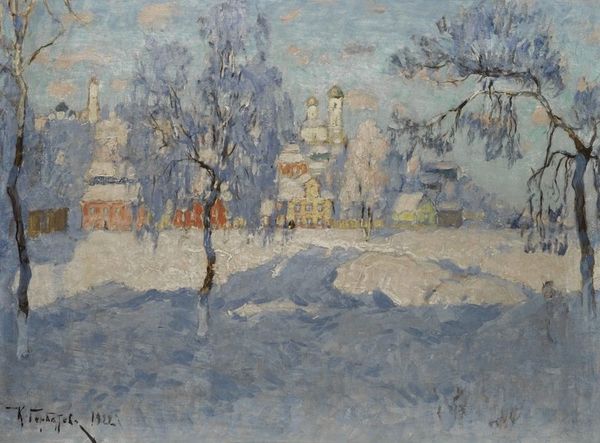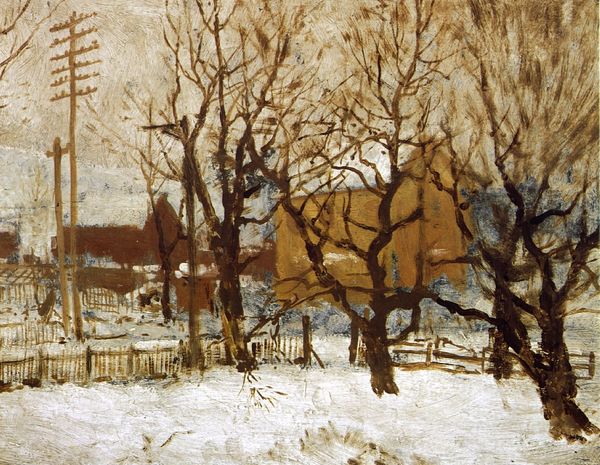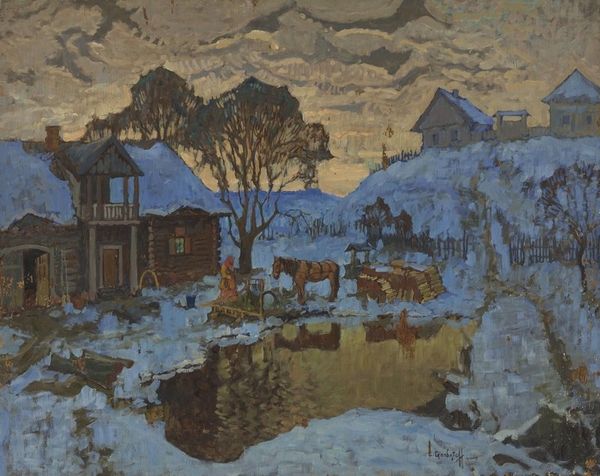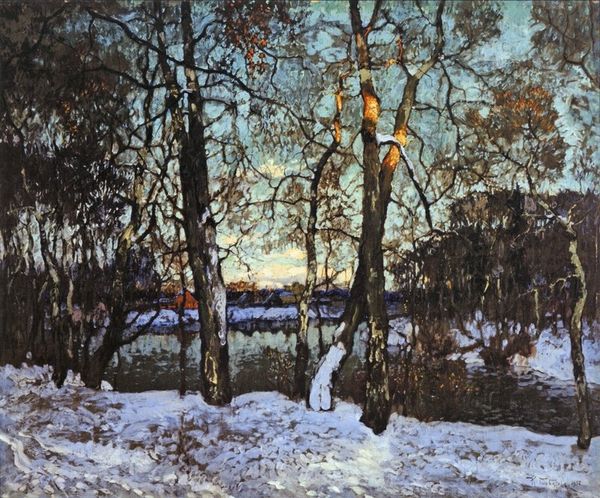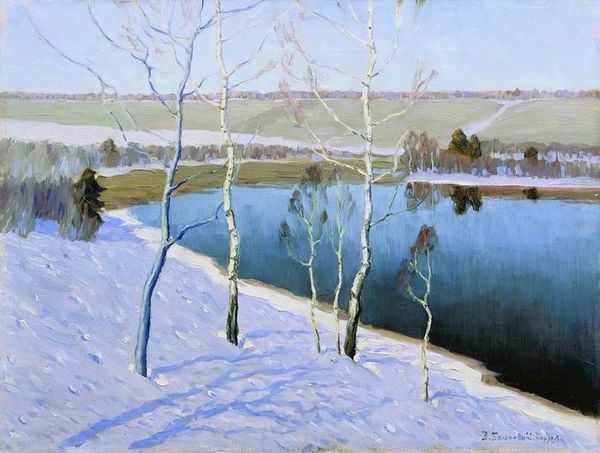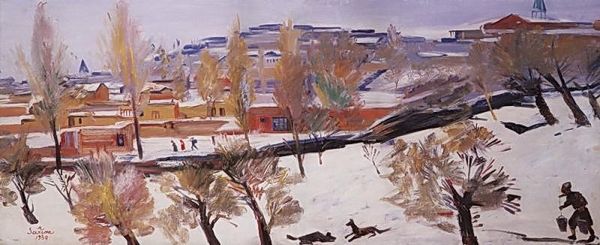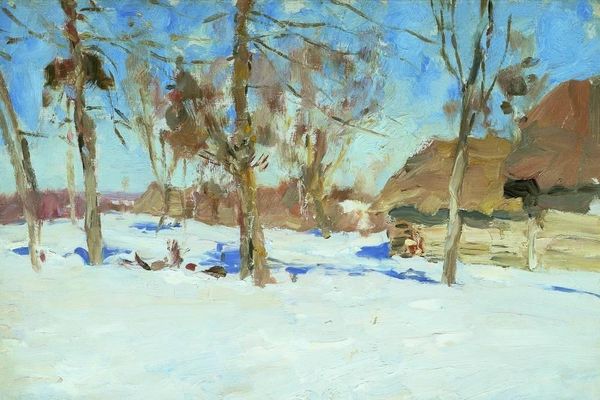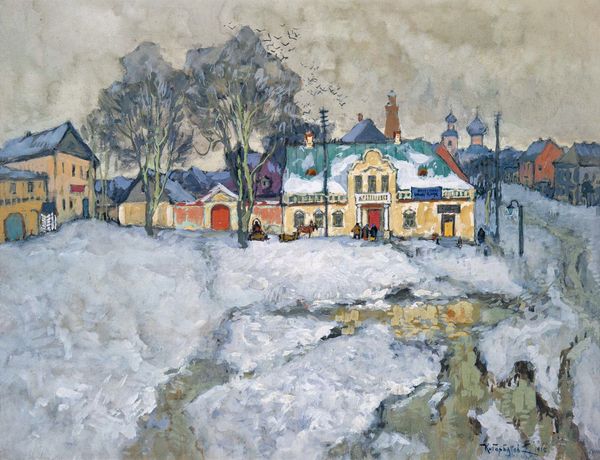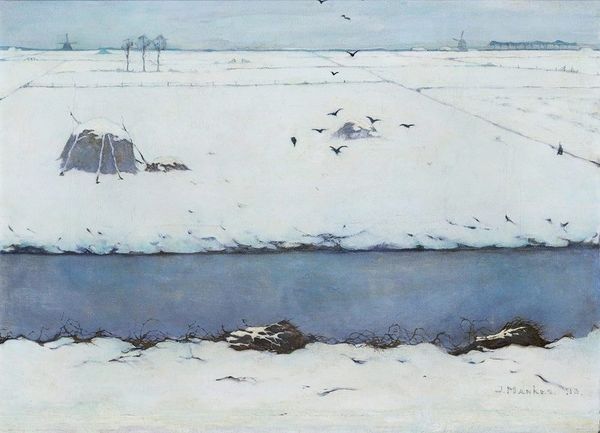
Copyright: Public domain
Curator: This is Konstantin Gorbatov's "Winter," painted in 1919, an oil-on-canvas work showcasing a serene Russian village landscape blanketed in snow. Editor: Immediately, I’m drawn to the materiality. The paint is thick, applied with visible brushstrokes, and captures the heavy, damp quality of snow reflecting the winter sun. Curator: Yes, and those broad strokes lend themselves to an Impressionistic style that still allowed for reflections on tradition within the tumultuous socio-political period of the Russian Avant-Garde. You can observe the architectural vernacular. Editor: Right. It is compelling how Gorbatov uses the landscape as an insight into a social landscape in which community still thrives, albeit under harsh environmental, and undoubtedly social, conditions. The muted color palette emphasizes the limitations placed on access. Curator: In that period, access for some was incredibly limited. "Winter" reflects on the artist's view of an ideal rural Russia steeped in a traditional identity – which seems relevant since Gorbatov would later emigrate and long for the "real" Russia. He returned in pigment. Editor: It speaks to the romanticizing of labor, too, doesn’t it? The labor of survival made beautiful, somehow softened by the impressionistic brushwork, while likely still difficult. We should note, however, the access Gorbatov himself had to paint. Curator: Absolutely. His perspective comes from a place of privilege. Even within this seemingly straightforward landscape painting, we find layers of socio-economic context interwoven with artistic choices. Gorbatov’s longing speaks to his changing position as an exile. Editor: Thinking about the practical side of things, consider how Gorbatov manipulated his materials. It reminds us of the physicality of art-making, a form of work. Thank you, that deeper reading helps illuminate that context for me. Curator: My pleasure. Seeing this work offers insight into its materiality, plus how its message intersects with Russian history. Editor: Indeed. And examining both artistic craft and context provides richer engagement and insight.
Comments
No comments
Be the first to comment and join the conversation on the ultimate creative platform.
